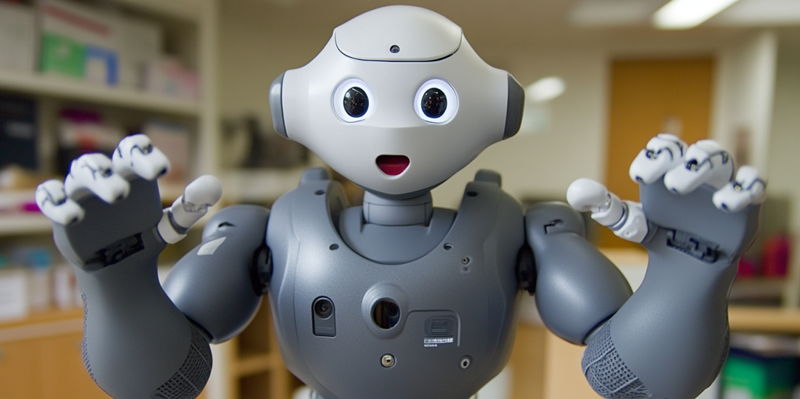Imagine a world where software systems can autonomously learn and improve their functionality based on the data they process. This vision is increasingly becoming a reality with Learning-Aided Machine Robotic Process Automation (LAM RPA), a groundbreaking advancement blending machine learning with traditional Robotic Process Automation (RPA). Unlike standard RPA, which automates repetitive tasks but often necessitates manual updates, LAM RPA’s ability to self-learn enables it to adapt continuously. This dynamic learning capability not only boosts efficiency but also diminishes the need for constant human oversight and intervention.
Transformative Potential of LAM RPA
Enhancing Operational Efficiency
The integration of machine learning into RPA signifies a leap forward in operational efficiency, particularly for large organizations. By deploying LAM RPA systems across multiple departments, businesses can achieve far greater scalability and flexibility in handling complex tasks. For instance, customer service processes can be streamlined with bots that learn to understand and resolve queries more efficiently over time. Similarly, supply chains could see optimized workflows as LAM RPA systems analyze data patterns to predict and mitigate disruptions. These advancements promise not only to enhance productivity but also to elevate the quality of services offered by these sectors.
Moreover, the healthcare industry stands to benefit substantially from LAM RPA. With the technology’s ability to adapt and process vast amounts of data, healthcare providers can improve patient care through faster, more accurate information processing. For example, patient record management and processing insurance claims could become more efficient, reducing administrative burdens and allowing healthcare professionals to focus more on patient care. As these systems continue to evolve, the scope for innovation within these fields appears boundless.
Addressing Complex Tasks Seamlessly
One of the critical strengths of LAM RPA lies in its capacity to manage intricate tasks that go beyond the capabilities of traditional RPA systems. This adaptability is particularly beneficial in environments where tasks are data-intensive and require constant adjustments. In customer service, an LAM RPA bot can learn from past interactions to provide more accurate and personalized responses to customer queries. This not only enhances customer satisfaction but also allows human agents to focus on more complex inquiries, leading to a more efficient allocation of resources.
In addition, the integration of LAM RPA in the supply chain sector can drive significant efficiencies. These systems can analyze and learn from data across various points in the supply chain, helping to forecast demand, optimize inventory levels, and identify potential bottlenecks before they become critical issues. By continuously learning and adapting, LAM RPA provides a level of agility and responsiveness that traditional RPA systems simply cannot match, making it a powerful tool for businesses looking to stay competitive in an ever-evolving market.
Navigating the Challenges
Societal and Employment Implications
Despite its many benefits, the rise of LAM RPA has sparked concerns regarding job displacement. As these systems become more adept at performing repetitive tasks traditionally managed by humans, there is a legitimate fear that many roles could become obsolete. This presents a critical challenge for society: finding ways to balance technological advancement with the need to maintain employment for the workforce. Policymakers and business leaders must work collaboratively to retrain and reskill workers, ensuring that they can transition into roles that cannot be easily automated.
Furthermore, there are ethical considerations regarding the dependency on automated systems. As LAM RPA takes on more tasks, the human workforce may lose valuable skills and critical thinking abilities necessary for problem-solving and innovation. There’s a fine line between leveraging technology to enhance productivity and creating an over-reliance on automation that diminishes human capability. Addressing these issues requires a strategic approach that supports both technological integration and human development.
Privacy and Security Concerns
Imagine a world where software systems can autonomously learn and enhance their operations based on the data they analyze. This vision is steadily turning into reality with the advent of Learning-Aided Machine Robotic Process Automation (LAM RPA). This innovative technology fuses the capabilities of machine learning with the traditional functions of Robotic Process Automation (RPA). While conventional RPA automates repetitive tasks, it typically requires manual updates and adjustments. In contrast, LAM RPA possesses the capability to self-learn, allowing it to continuously adapt and improve without the constant need for human oversight and intervention.
This dynamic learning feature significantly enhances efficiency and reduces the necessity for ongoing manual updates. LAM RPA can handle more complex tasks and make intelligent decisions based on real-time data, effectively transforming the landscape of automation. As organizations increasingly adopt LAM RPA, we can look forward to more streamlined processes, reduced operational costs, and a higher level of productivity, all with less human intervention.

